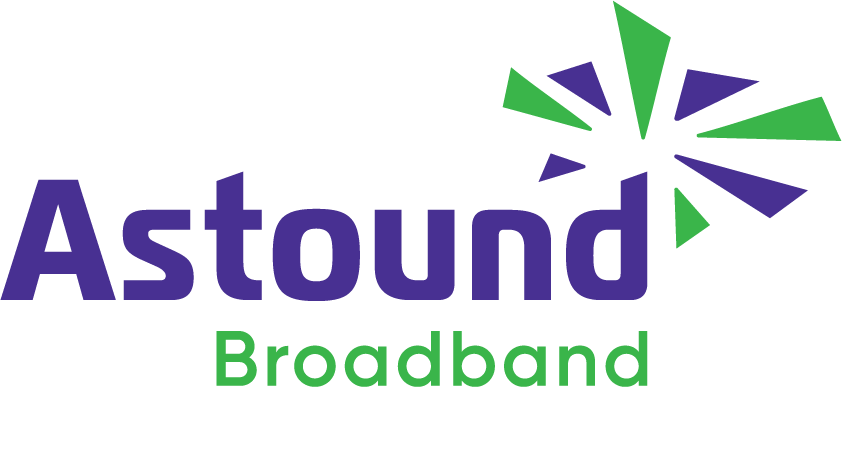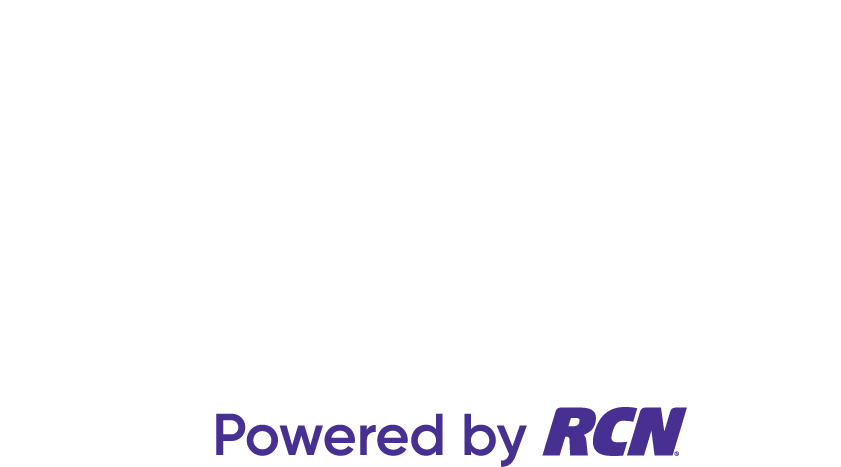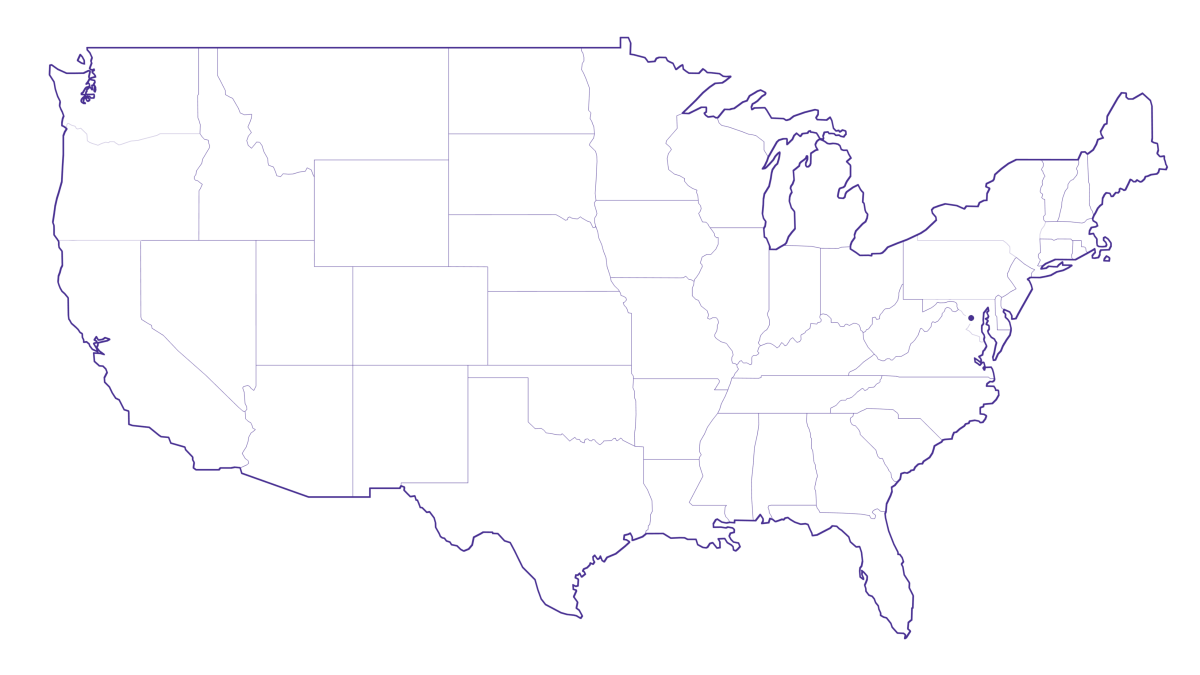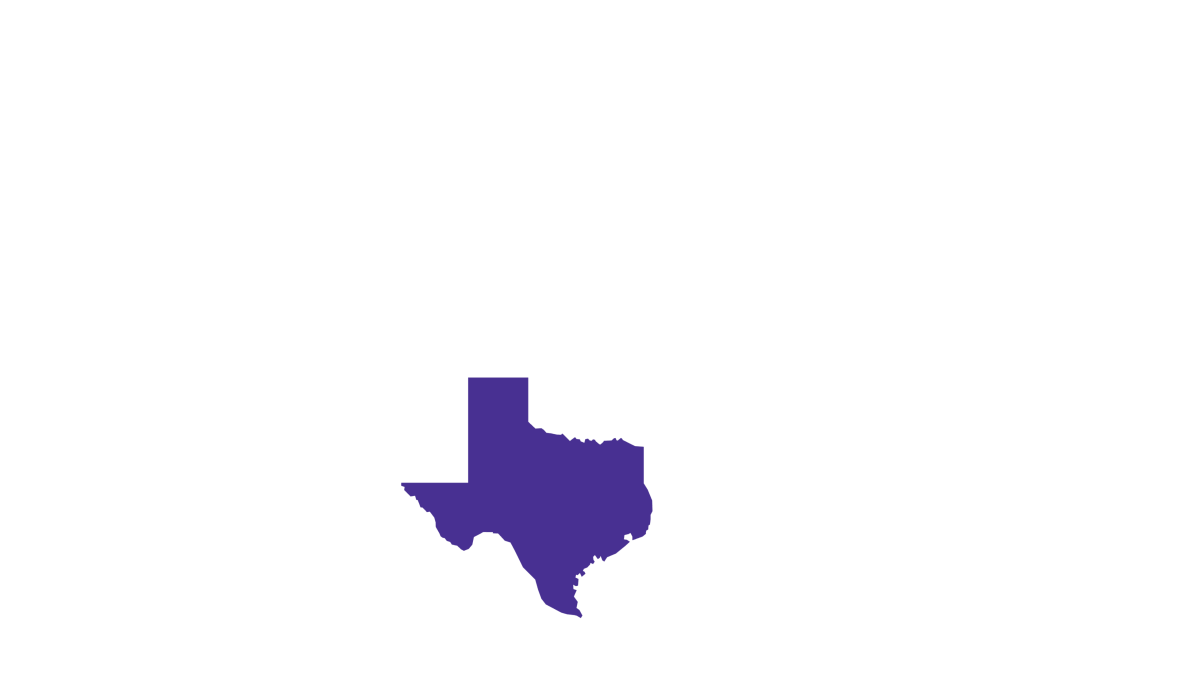Cable TV vs. satellite TV: Which is better?

Cable TV and satellite TV are two popular technologies for television programming.
Cable TV, launched in the late 1940s to improve coverage in areas lacking adequate over-the-air signal reception, delivers television programs using underground or overhead coaxial cables.
Satellite TV, which launched in the 1960s but became viable for home users in the 1990s, uses broadcast signals from satellites that orbit the Earth. It is ideal for users in rural areas where cable infrastructure is limited.
Choosing the right TV service can significantly impact your viewing experience, budget and access to specific content. This article distinguishes between cable TV and satellite TV, exploring each technology’s pros and cons to help you select the ideal TV service for your entertainment needs.
Mobile + Internet + TV
Switch to Astound
Get Astound Mobile, Internet and TV—and save on the best services available.
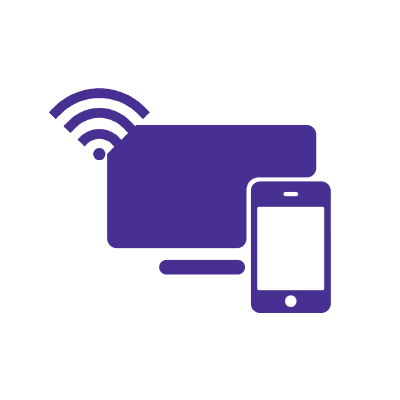
Overview of cable TV
Cable TV has been the standard TV service for many households for the last few decades, offering reliable, diverse and premium television programming content.
How cable TV works
Cable television operates through a coaxial cable network, directly transporting television signals from a central distribution hub into homes. The coaxial cables consist of an inner copper conductor covered by an insulating layer, a metallic shield and a plastic outer casing. Its design enables it to transmit vast amounts of data over large distances with minimal interference and without loss of signal quality.
Cable TV companies receive programming from different sources, including broadcasting networks and local stations, process it and then distribute the signals. The signals travel through a network of coaxial cables to neighborhoods and individual homes. At each house, the signals transmit to a cable box or directly to the built-in cable card in your TV, which decodes the signals, enabling you to watch the channels provided.
Modern cable TV systems offer DVR equipment, which enables you to record, pause and rewind content to watch at your convenience. Cable TV also provides users with HD and ultra-high-definition content, improving the viewing experience.
Major cable TV providers
Astound is a prominent cable TV provider that offers a wide range of cable TV packages alongside internet and mobile phone services. Astound offers basic, preferred and premium TV channel packages, including HD, ultra-HD and on demand content. You can also purchase TV packages bundled with high-speed internet and mobile phone plans, which you can customize according to your needs and enjoy the benefits of all services under one subscription.
One critical factor to consider when choosing a cable TV provider is availability. Astound’s cable TV coverage is available nationwide in major urban and suburban areas. However, verifying whether the services are available in your location is essential, as coverage can vary across neighborhoods.
Overview of satellite TV
Satellite TV is an alternative service to cable, offering television programming to people living in areas with limited access to cable infrastructure.
How satellite TV works
Satellite TV transmits signals wirelessly from a geostationary satellite in orbit around Earth to a satellite dish installed in your house.
Satellite TV has two required primary components to receive signals and enable you to watch TV in your home. These components are:
- A satellite dish: The dish is installed on your house’s roof or exterior wall to receive signals from a communication satellite in space. The dish focuses the signal into a small antenna, which amplifies and directs the signals to the receiver.
- A receiver: The receiver inside your house can either be a set-top box or built into your TV, decoding the signals and converting them to channels you can view.
Signal transmission starts from a broadcast center on Earth, which receives signals from various television networks and local stations. The broadcast center then sends the signals to the communications satellite in space, which is in a fixed position relative to the Earth to provide consistent coverage over large areas.
The satellite then amplifies and rebroadcasts the signals back to Earth to the satellite dish in your home.
Availability and coverage
Unlike cable TV, which requires wired cable infrastructure to provide its services, satellite TV is widely available and can reach urban and rural remote areas as long as the satellite dish has a clear view of the sky.
However, adverse weather conditions (heavy rainfall and snow storms) and physical obstructions (tall buildings and dense foliage) can impact the dish’s ability to receive signals or degrade signal quality.
Switch & save
Astound is the #1 cable ISP
Stream live content, work, surf, game and connect to multiple devices with speeds up to 1500* Mbps through our ultra‑reliable fiber‑powered network.*

Comparison of cable TV and satellite TV
Let’s discuss some comparative points and aspects to consider when choosing between the two TV services.
Picture quality
While both offer HD and 4K options, the availability of HD and 4K channels may vary between the TV service providers depending on several factors.
- Cable TV: Your home’s distance from the cable provider’s broadcasting hub or interference in signal transmission within the cable lines can impact the picture quality of cable TV. In addition, older coaxial cable lines degrade with time, resulting in occasional signal loss or lower signal strength.
- Satellite TV: The wireless signal transmission by satellite TV providers can be affected by adverse weather conditions such as heavy rain and snowstorms, causing signal distortion and low picture quality. Also, improper dish alignment can lead to poor signal reception, affecting picture quality.
Channel lineups and packages
Cable and satellite TV services offer several packages, including basic and premium channels.
- Basic cable vs. basic satellite packages: Basic packages from cable TV companies feature a mix of local channels and a selection of general entertainment and regional sports channels. Astound’s Astound TV (basic TV) package offers 40+ channels. While cable TV focuses on local programming with channels like ABC and CBS, satellite TV often provides a broader selection of local, national and international channels.
- Premium channels and specialty content: Both TV services offer premium channels like Max, Showtime and Starz. However, satellite TV provides more extensive international channels and niche options.
Pricing and costs
One of the significant factors when choosing between cable and satellite TV is the pricing.
Monthly bills and fees
Cable plans are generally more affordable than satellite TV, with packages starting at around $30 per month, depending on your selected package. However, cable TV plans can include additional fees for premium channels and DVR services.
Satellite TV plans are more expensive than cable, starting at $70, depending on the package. However, they offer more channels than cable.
Equipment cost
Cable TV usually requires a set-top box, typically included in the package price. However, depending on the cable TV provider, renting or purchasing DVR equipment costs extra.
Satellite TV requires a dish and a receiver, typically provided by the service provider, and a DVR to allow content recording. Some providers may require a customer to buy or rent the equipment separately, which adds to the subscription cost.
Installation fees
Cable TV installation is usually free or low-cost, especially in places with existing cable infrastructure. Some companies also offer self-installation kits.
Satellite TV installation is more complex. It involves mounting the dish on the roof or exterior walls of the house. Companies may charge for professional dish installation or waive the installation fee for new customers as part of their promotional campaigns.
Contracts and commitment
Most cable TV providers offer monthly no-contract payments, which users can cancel anytime. However, bundling services (TV, internet and phone plans) often require signing a one-to-two-year contract with locked pricing and early termination fees when you cancel.
Comparatively, satellite TV plans often require 12 to 24-month contracts with substantial early termination fees if you cancel your subscription.
Bundling options (TV, internet, phone)
Most cable providers offer cost-effective bundles that include TV, high-speed internet and mobile phone services. With Astound, you can build a cable TV and internet bundle by pairing an internet plan with Astound TV, giving you access to reliable fast internet speeds, live TV and on demand content in one package.
Satellite TV providers have limited options for bundling, having to partner with local ISPs to provide internet services. Therefore, the flexibility and pricing of satellite bundles may not be as attractive as cable bundles.
DVR capabilities
Both cable and satellite services offer DVRs. However, the capacity of the DVR may vary by cable provider and model.
Reliability and weather-related issues
Weather conditions significantly affect satellite TV, especially during heavy rain or snowstorms. On the other hand, cable TV is generally more dependable in bad weather, although outages can still happen due to damage to infrastructure or maintenance work.
Customer service and support
Both cable and satellite television service providers offer customer support, although overall customer satisfaction can vary significantly based on individual experience
Find your speed
What speed do you need?
Maybe you just need the essentials—or maybe you need to unleash the ultimate internet speed. Explore your options to get the best experience for every device in your home.

Pros and cons of cable and satellite TV
Let’s look at the pros and cons of each TV service:
Cable TV pros and cons
Pros
- Reliability: Cable TV is more reliable as it relies on a wired infrastructure, which is less susceptible to weather-related disruptions and signal interference.
- Various bundled packages: Cable offers bundles that allow customers to combine cable TV, internet and phone services into a single subscription. These bundles often come with discounts and offer significant cost savings compared to buying the services individually.
- Wider availability in urban and suburban areas: Cable infrastructure is widespread in metropolitan regions, reaching a larger population. It’s an ideal option for households in densely populated areas.
- Flexible contract options: Most providers offer monthly cable TV plans, enabling users to avoid long-term contracts and cancel at their convenience without termination fees.
- Local programming: Cable TV offers a better selection of local channels and regional sports networks.
Cons
- Limited availability in rural areas: Cable infrastructure is often less accessible in rural or remote regions due to the high costs of setting up infrastructure over long distances.
- Additional fees: Cable TV services often include extra charges on equipment rental fees and premium channel subscriptions. Basic packages offer limited channels, pushing users to subscribe to premium channels to access their desired content.
- Limited mobility: Cable TV is generally bound to your physical location. This inflexibility is a drawback for people who travel frequently.
Satellite TV pros and cons
Pros
- Wide channel selection: Satellite TV provides a wide range of international and local channels. Most basic satellite TV packages offer more than or equal to the number of channels cable TV premium packages provide.
- Price lock: Satellite TV providers offer price lock guarantees through their contracts, ensuring users pay the same amount through the contract termination date.
- Wide coverage area: Satellite TV can cover larger areas, making it an ideal option for people living in rural and remote areas.
- Flexible accessibility and coverage: Some satellite TV providers offer portable dishes for RVs and frequent campers.
Cons:
- Weather dependency: Adverse weather conditions, such as heavy rain, snow or strong winds, disrupt satellite TV transmissions, leading to inconsistent performance.
- Long-term contracts: Providers may require one-to-two-year contracts.
- Installation complexity: Satellite dishes require technical expertise for self-installation or hiring a professional for installation, which can be expensive if not covered by the package price.
- Limited bundling options: Satellite TV bundles are limited compared to cable bundles, as satellite companies often have to partner with local ISPs to provide internet services. The lack of comprehensive packages can inconvenience users who prefer a single provider for all services.
- Potential lag: The wireless signal transmission can cause issues with lag while channel surfing which can be frustrating for users.
Other factors to consider
Besides costs, channel lineups, picture quality and contracts, here are other factors that you should consider when choosing between cable and satellite TV:
Rural vs. urban availability
Cable is generally available in urban and densely populated areas with well-established cable infrastructure. Cable providers also generally offer the ability to bundle TV with high-speed internet and phone services for users in urban areas.
Satellite is available nationwide as long as the dish is aimed towards a clear sky. However, it faces stiff competition from cable providers in urban areas. It is often more feasible in rural areas with limited or absent cable infrastructure.
Apartment living and HOA restrictions
Cable is a more straightforward option for apartment residences as most apartments already have cable wiring, enabling easy connection. Installing a satellite dish in apartment buildings can be challenging, as many apartments lack a clear view of the sky. Additionally, some building managers may restrict the installation of dishes on walls or balconies.
Some HOAs may have rules restricting the placement of satellite dishes, particularly in gated communities, townhouses or condos. Always confirm with your HOA to ensure compliance with their regulations before installing your satellite dish.
Cable TV is more HOA-friendly as the infrastructure may already be in place and no outdoor equipment is required.
Sports programming
Cable TV offers local, regional and international sports channels. However, it lacks exclusive rights to certain premium sports packages, limiting access to out-of-market games.
Satellite TV provides more sports channels, especially for local and international leagues. Satellite services also provide a wide selection of channels for niche sports such as tennis, golf and cricket.
International and specialty channels
Both satellite and cable TV services provide various international and specialty channels, from foreign language programming to niche categories. However, cable TV offers a limited variety and fewer global and niche channels than satellite services. These can be hard to access in basic cable packages and require a subscription to the pricier premium channels.
Build your plan
Your perfect plan is just a click away
Get the speeds, WiFi, mobile and TV plans you need all at an affordable price. Bundle your services with Astound and see how much you can save.

How to choose between cable and satellite TV
- Define your needs and preferences before choosing a TV service. Consider your viewing habits (e.g., sports, entertainment and movies or international and speciality channels). Also, do you prefer to record shows and watch them later, or do you prefer on demand content? Determine your preferences and choose accordingly.
- Once you have assessed your needs, evaluate what services are available in your area and research service providers near you. If you live in an urban or suburban area, consider cable TV as the infrastructure is readily available. Cable infrastructure might be limited if you live in a rural or remote location so satellite TV may be the right choice.
- Finally, compare the costs and value each provider provides. Look at the monthly subscription prices, equipment fees, taxes, contractual agreements and installation charges. Consider and compare various bundling services offered by cable and satellite companies. These bundling services provide significant cost savings as they are more affordable than subscribing to individual services.
After carefully evaluating your needs and preferences, availability of services and comparing costs and values, prioritize what is important to you and make an informed decision regarding your viewership needs.
Conclusion
Choosing between cable and satellite TV requires considering several factors, including price, picture quality, channel packages, contracts, reliability and availability. Both options have advantages and disadvantages, making the choice dependent on your personal needs.
Cable TV is prevalent in urban and suburban areas. Due to its wired infrastructure, it offers consistent performance despite adverse weather conditions. Its plans are generally cheaper than satellite, offering attractive bundles and flexible monthly payment plans. However, it may charge extra fees for equipment and premium channel subscriptions, offers less channel variety and exclusive channels compared to satellite TV.
Satellite TV provides broader channel selection, including local, international and exclusive sports content. It’s also flexible, with portable dishes for RV and campers unlike location-bound cable. However, satellite plans are costlier upfront, require long-term contracts, offer limited bundling options and the performance is vulnerable to weather-related disruptions and lag.
Cable is ideal if you want affordable prices, compelling bundling options and shorter contracts. In comparison, satellite is the best option if you want a wider variety of channels, flexibility to move to other locations and a price lock guarantee throughout the contract period.
Frequently asked questions
Does cable have better picture quality than satellite TV?
Both services offer excellent picture quality with HD and 4K quality content. However, satellite TV’s picture quality may be less consistent as poor weather conditions frequently disrupt it.
What are the advantages of satellite TV over cable?
Satellite TV has the following advantages over cable TV:
- It offers a broader variety of channels than cable TV, including international and niche channels.
- It covers more regions as long as the dish has a clear view of the sky.
- It offers portability, as some satellite TV companies provide portable dishes and equipment for RVs and campers.
- Satellite TV contracts guarantee a price lock for the contract length without unexpected price surges.
Can I use a satellite dish for cable TV?
No, you cannot use a satellite dish for cable TV. You require cable wiring and a set-top box to connect to cable TV.
Create the perfect bundle
Get the speed, WiFi, mobile and TV that’s just right for you.
While we have made every attempt to ensure that the information contained in this site has been obtained from reliable sources, Astound is not responsible for any errors or omissions, or for the results obtained from the use of this information. All information in this site is provided “as is”, with no guarantee of completeness, accuracy, timeliness and without warranty of any kind, express or implied, including, but not limited to warranties of performance, merchantability and fitness for a particular purpose. Certain links in this site connect to other websites maintained by third parties over whom Astound has no control. Astound makes no representations as to the accuracy or any other aspect of information contained in other websites.
